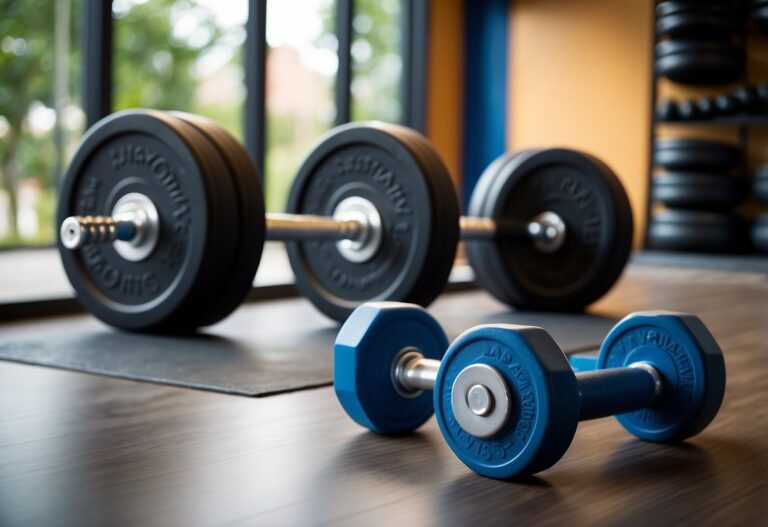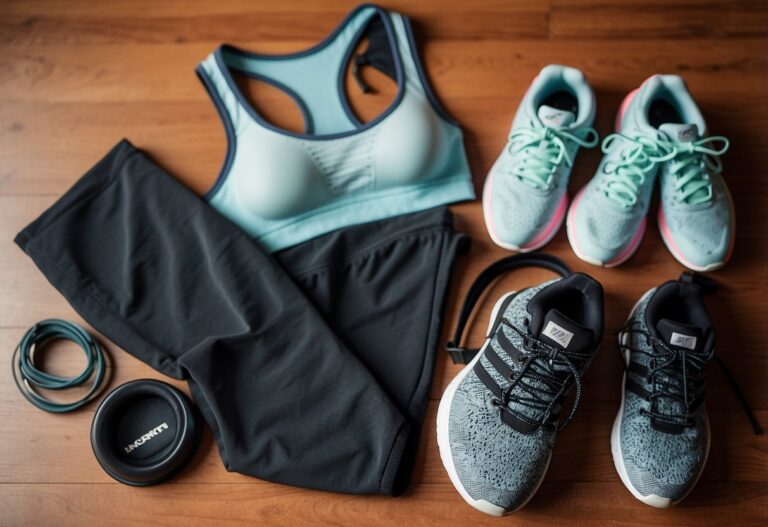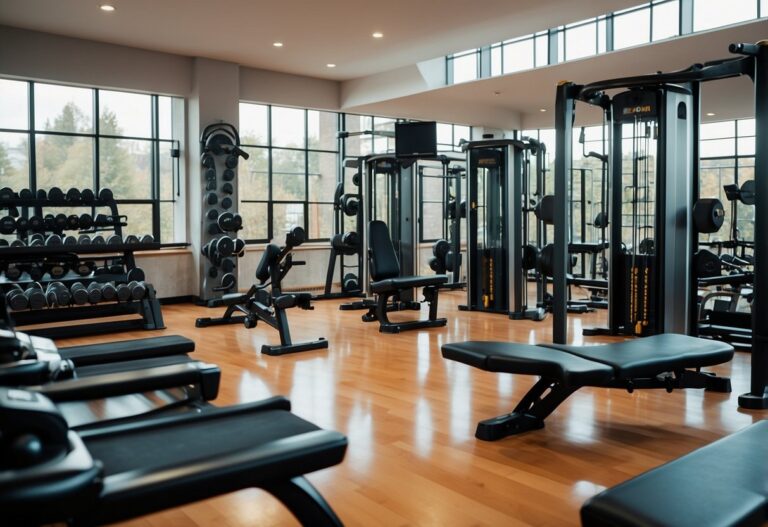When the cold weather starts, it can be tough to stay motivated to exercise. You might find yourself tempted to stay indoors, wrapped up in a blanket with a cup of hot cocoa. How can you keep your fitness routine going even when it’s freezing outside?

Staying active during winter is important for both your mental and physical health. It helps combat the winter blues and keeps your immune system strong. Plus, you don’t want to lose the progress you’ve made throughout the year.
Outdoor Ice Skating

Outdoor ice skating is a fun way to stay active during winter. It’s not just about gliding on the ice; it’s a full-body workout.
When you skate, you engage your legs, core, and even your arms. This means you get cardiovascular benefits along with muscle toning.
Ice skating also offers a great way to enjoy the winter landscape. Imagine skating in a beautiful park surrounded by snow. It’s a peaceful and exhilarating experience.
If you haven’t tried it yet, give it a go. Find a local ice rink and experience the joy of outdoor skating. It’s a wonderful way to combine exercise and fun.
Snowshoeing Treks
Snowshoeing treks can be a fantastic way for you to stay active during the winter months. This activity not only provides a solid workout but also lets you enjoy the serene beauty of snowy landscapes.
When starting out, it’s wise to plan shorter treks. If you’re used to hiking five miles in the summer, begin with a one- or two-mile snowshoe trek, as it’s tougher on the legs and requires more energy.
Using equipment like heel lifts on steep climbs can make your trek more enjoyable. Heel lifts help keep your feet level, preventing calf strain and reducing the risk of falling backwards.
Before heading out, always warm up. A proper warm-up can prevent injuries and help you get the most from your trek. Remember, if you push too hard right away, you might run out of steam quickly.
Snowshoeing also lets you explore areas that might be too crowded in the summer. It can be a great time to find solace in nature and experience the quiet beauty of winter.
Whether you’re a fitness lover or just looking for a new way to enjoy the season, snowshoeing offers an excellent mix of challenge and enjoyment.
For tips on getting started, you could check out this beginner’s guide to snowshoeing.
Winter Hiking Routes

Are you looking to explore winter hiking routes? Whether you’re new to winter hiking or a seasoned trekker, there are some great spots you might want to try out.
Consider trails in national parks like the Lake District. These paths offer stunning views covered in snow, making for a memorable hike.
Another amazing option is the Snowdonia National Park. With various trails, you can find one that suits your skill level and enjoy the winter scenery.
Don’t forget to check weather conditions before setting out on your hike. Accurate forecasts can help you prepare for your adventure and ensure safety.
Cross-Country Skiing
Cross-country skiing offers both a great workout and a chance to enjoy the winter landscape.
When you’re starting out, focus on upper body exercises. Pull-ups, push-ups, and rows can build the strength needed for skiing. Aim to do these exercises 2-3 times a week.
Interval training can be very effective. Try skiing for 10 minutes hard, then take a two-minute break. Repeat with nine minutes, then eight, and so on.
Remember to focus on your posture. Keep an upright stance to maintain balance and avoid straining your back. Don’t forget to wax your skis to improve your glide.
Additionally, consider increasing your flexibility. This can be done with regular stretching, which will help prevent injuries and improve your range of motion. Try to stretch after each workout to keep your muscles loose.
Finally, always remember to dress appropriately. Overdressing can lead to excessive sweating, making you cold. Dress in layers so you can adjust as needed.
For more guidance, you can explore cross-country ski training and safety tips online.
Strength Training Indoors

Strength training indoors is perfect for winter months. You can use equipment like kettlebells, dumbbells, and resistance bands to build muscle and increase strength. These tools are versatile and can be used for a variety of exercises, including squats, lunges, and presses.
If you have access to a gym, try machines like the leg press or lat pulldown. They provide a controlled way to target specific muscle groups. Bodyweight exercises like push-ups and planks are also effective and don’t require any special equipment.
Mixing up your routine keeps things interesting. Try programmes or follow workouts available online to ensure proper form and avoid injury. Winter mornings can be tough, so preparing your workout clothes and equipment the night before can make it easier to stick to your routine.
Remember to warm up before starting and cool down when you finish. These steps help prevent injuries and aid recovery, keeping you active throughout the winter.
Yoga for Flexibility

Yoga is a fantastic way to improve your flexibility, especially during the winter months.
Try incorporating forward bends into your routine. For example, bend at your hips to fold your torso forward, letting your hands drop to the floor or rest on a block. This helps stretch your hamstrings and lower back.
Another great pose is the seated forward fold. Sit on the floor, stretch your legs out, and reach for your toes. This pose will gently stretch your back and hamstrings, promoting flexibility.
Practice consistently. Even a few minutes of yoga each day can make a big difference.
HIIT Workouts at Home

High-Intensity Interval Training (HIIT) is perfect for home workouts, especially when it’s cold outside. You don’t need a gym to get your heart rate up. Short, intense bursts of exercise followed by rest can keep you fit.
Try doing bodyweight squats for 20 seconds, then rest for 10 seconds. Repeat this for 4 rounds. You’ll feel the burn quickly!
Push-ups are another great exercise. Do them for 20 seconds, then take a 10-second break. Four rounds will give your upper body a solid workout.
If you prefer variety, go for plank and hollow-hold combos. Start in a plank position for 20 seconds, take a 10-second rest, and repeat. It works your core well.
For something extra, add squat jumps. These get your heart pumping and your legs working hard, even in a small space.
Your living room can become a mini gym. No excuses! You’ll be surprised how effective a HIIT workout can be without any equipment.
Lastly, if you’re feeling adventurous, burpees are a killer full-body exercise. Twenty seconds on, ten seconds off, for four rounds, and you’ll be sweating in no time.
Winter Running Gear
Running in the cold can be a challenge, but the right gear makes all the difference.
Start with a solid base layer. It should be light, breathable, and moisture-wicking to keep sweat off your skin. The Elite 3.0 from inov-8 is a good example.
You also need insulated running tights or pants. These keep your legs warm and flexible. Look for materials that block the wind without being too bulky.
Don’t forget a waterproof jacket. Something like the Arc’teryx Norvan Shell Jacket can keep rain and snow off you.
For footwear, go for shoes that have minimal mesh or are weatherproof to keep warmth in and slush out. Look for pairs with Gore-Tex uppers if possible.
Finally, keep your head warm with a winter running hat. The On Lumos Beanie is a great option.
When you’re well-equipped, running in winter can be just as enjoyable as in warmer months.
Sledding Hills

Finding the right sledding hill can make your winter workout more effective and enjoyable. Choose a steep hill for a more intense workout, as climbing back up will challenge your legs and stamina.
Have you ever wondered why some hills seem perfect for sledding? It’s all about the slope and smoothness. A longer hill means more effort to climb and more time to enjoy the ride down.
When looking for sledding spots, consider public parks or areas where sledding is allowed. Make sure the hill is free of obstacles to ensure safety.
Sledding with friends or family is also a great way to make exercise fun.
Indoor Rock Climbing

Indoor rock climbing is a fantastic winter workout. You can stay active and warm inside.
Start on a slab or less steep wall. This helps you get used to the movements.
Focus on your hand and footholds. Maintain good posture and keep your heels down.
Relax your shoulders. Tension in your upper body can make climbing harder.
Consider hiring an instructor. They can teach you the basics and help you climb safely.
Local climbing communities often have great tips. Connecting with them can enhance your experience.
Stay calm by practising breathing techniques. This helps you focus and climb more effectively.
Benefits of Winter Workouts
Engaging in winter workouts comes with a host of advantages that benefit both your body and mind, helping you stay fit and healthy throughout the colder months. These benefits are especially valuable during the winter when it can be harder to stay active.
Physical Benefits
Winter workouts can be particularly beneficial for your physical health. Exercising in the cold prompts your body to burn more calories as it works harder to stay warm. This is because activities like running or cycling in the winter require more energy, leading to a more effective calorie burn than doing the same exercise in warmer conditions.
Cold-weather workouts can also enhance your cardiovascular health. The cold air challenges your heart and lungs, which can improve your overall cardiovascular endurance. Plus, winter workouts can strengthen your immune system. Regular exercise aids in keeping your body strong and resilient against common winter bugs.
Additionally, outdoor winter exercises, like weightlifting or bodyweight exercises, can be very effective. You might also try winter sports such as skiing or ice skating, which are excellent for building muscle strength and improving coordination.
Mental Health Advantages
Winter workouts are not just good for your body; they also have significant mental health benefits. Exposure to sunlight during outdoor activities helps combat seasonal affective disorder (SAD), a type of depression that some people experience during the winter months. Sunlight exposure can boost your mood and energy levels, making you feel more motivated and happy.
Exercise triggers the release of hormones such as endorphins and irisin, which help reduce stress and anxiety. When you exercise in cold weather, your body releases even more of these “feel-good” hormones, improving your mental well-being. This can lead to enhanced mental clarity and a better overall state of mind.
Participating in winter activities with friends or family can also be very rewarding. Social interaction during exercise can further lift your spirits and provide a sense of community and support. Plus, working out in a group can motivate you to keep pushing through the cold months.
By staying active in winter, you’re not only taking care of your physical health but also boosting your mental resilience and emotional well-being.
Clothing Considerations for Cold-Weather Exercise
When working out in cold weather, wearing the right clothes is crucial to staying warm and comfortable. Focus on layering and choosing the right fabrics for your clothing to ensure you get the most out of your exercise.
Layering Basics
Layering helps to trap heat between layers while allowing sweat to escape. Start with a base layer that is lightweight and moisture-wicking. This layer can be made from materials like polypropylene or merino wool, which keep sweat away from your skin.
Next, add a mid layer for insulation. Fleece or synthetic materials are excellent choices as they are warm and breathable. This layer helps retain your body heat.
The outer layer should be windproof and waterproof to shield you from the elements. Look for jackets made from Gore-Tex or similar materials. These jackets should also have vents to release excess heat.
Choosing the Right Fabrics
The fabrics you choose for each layer play a significant role in your comfort. Polypropylene and merino wool are great for the base layer because they wick moisture and dry quickly. Cotton, on the other hand, should be avoided as it retains moisture and can make you feel colder.
For the mid layer, consider fleece or microfibre. These fabrics are breathable and provide excellent insulation. They keep your body warm without adding too much bulk.
Your outer layer should be made from waterproof and windproof materials like Gore-Tex or eVent. These materials protect against wind and rain, keeping you dry and comfortable. Look for jackets that also have zippers or flaps to allow for ventilation when your body heats up during exercise.
Safety Tips for Winter Workouts
Staying active during winter can be tricky but rewarding. Visibility and injury prevention are key concerns to keep in mind when exercising in cold weather.
Staying Visible
When you exercise outside during winter, it often involves low light conditions. Wearing reflective clothing is essential. Use gear like light-coloured jackets and reflective vests. You can also add clip-on lights to your shoes or bag to improve visibility.
Consider using headlamps or handheld flashlights on darker days. These are useful for both seeing the path ahead and being seen by others. Making yourself visible helps prevent accidents, especially from vehicles or fellow pedestrians.
Try to exercise in well-lit areas as much as possible. Parks and streets with plenty of streetlights make safer options. Remember to also stay on the sidewalks or trails dedicated to pedestrians to avoid traffic.
Preventing Injuries
Cold weather can stiffen your muscles and joints, leading to a higher risk of injury. Begin with a good warm-up indoors to loosen up your body. Dynamic stretches, like leg swings and arm circles, are effective. This boosts circulation before you face the outdoor chill.
Layer your clothing appropriately. Start with a moisture-wicking base layer to absorb sweat. Add insulating middle layers and a waterproof outer layer. This keeps you warm, dry, and protected from wind.
Watch out for icy patches on sidewalks and running paths. Wear shoes with good grip or even spike attachments for extra traction. If the weather is too severe, consider indoor alternatives like treadmills or home workout routines.
With thoughtful preparation and attention, you can enjoy your winter workouts safely and effectively.







